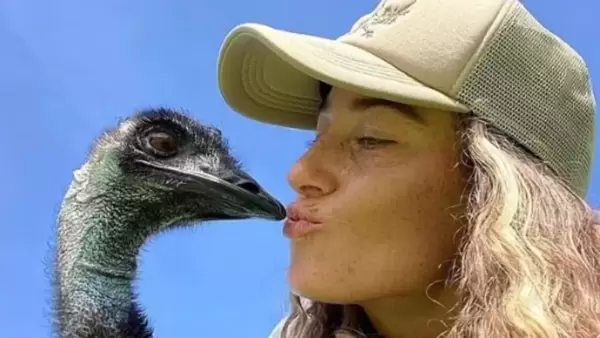[ad_1]
Viral TikTok star Emmanuel has reportedly contracted bird flu, and the emu has gained a lot of attention online thanks to a video shared by its owner at Knuckle Bump Farm in Florida.
Farmer Tyler Black tweeted that wild geese had brought bird flu to the farm and many of the birds had died.
As a large outbreak sweeps poultry farms across the US and the UK, many people are now asking: what exactly is avian influenza, and what do I need to know?
What is avian influenza?
Avian influenza is a disease caused by the influenza A virus that affects many species of birds.
This can have a significant impact on the poultry industry as it can affect poultry health, production and even international trade. Although bird flu does not usually infect humans, it is considered a zoonotic virus. This means that it can be transmitted to humans through contact with infected birds, and sporadic cases occur when outbreaks occur in poultry.
Some avian influenza viruses are more pathogenic than others. Pathogenic means causing disease, so if highly pathogenic avian influenza enters a poultry farm, it can cause sudden and significant death.
The reported outbreak on the farm where Emanuel lives is a highly pathogenic strain that has affected poultry and wild birds in the United States since January 2022.
Even low pathogenic strains can make birds unwell and cause them to lay fewer eggs.
Human infection with avian influenza can cause a variety of clinical symptoms, ranging from mild upper respiratory symptoms to severe pneumonia.
Some strains of bird flu, such as the highly pathogenic H5N1 and H7N9, can cause severe illness and, in some cases, death. The recommended standard of care for humans is antiviral medication, depending on the individual situation and severity of symptoms.
For poultry, the most likely route of infection is through contact with infected wild birds. This can be direct contact or exposure to water contaminated with wild bird droppings.
In general, an outbreak of bird flu in poultry farms means that many birds must be killed to stop the spread.
Is there any avian flu in Australia?
The World Organization for Animal Health has listed Australia as free of avian influenza in its poultry populations. However, we currently have a low level of low pathogenic influenza virus transmission in wild birds.
We have previously had several outbreaks of low and high pathogenic avian influenza in domestic poultry in Australia, the most recent of which affected farms in Victoria.
Many birds were released to eradicate the disease and in all cases were successfully eradicated.
None of the viruses causing these outbreaks in Australia have caused disease in humans. However, it is important that we use hygienic practices and biosecurity when working with poultry.
We currently do not have H5N1 in Australia; waterfowl are the birds that most commonly carry the virus and do not migrate to Australia. In addition, Australia has very strict biosecurity measures to prevent diseases from being imported. Therefore, the risk of introducing this strain into the country is very low.
Most measures aimed at reducing the risk of avian influenza outbreaks in Australian poultry have focused on reducing contact between wild and farmed birds. This means limiting wild birds’ access to farms and protecting and purifying water sources.
In the past decade, we have seen an increase in the number of domestic outbreaks in Australia. Previous research suggests this increase could be associated with an increase in free range poultry over the last 30 years.
A paper I coauthored in 2019 modelled how intervention strategies could reduce risk, noting that:
Converting 25% of traditional indoor farms to free range will increase the risk of highly pathogenic avian influenza outbreaks by 6-7%. Current water treatment practices are highly effective and reduce the risk of outbreaks by 25-28% compared to no water treatment. Halving wild bird populations in feed storage areas reduces risk by 16-19%, while halving wild bird populations of potential bridge species in sheds reduces outbreak risk by 23-25%.
A massive outbreak in Australia would cause huge losses to the industry, kill large numbers of birds and could threaten human health.
Although bird flu vaccines are available for poultry, these vaccines will only be considered in large outbreaks.
Adhering to proper biosecurity measures on poultry farms remains the most important preventative measure we need to avoid outbreaks.
With inputs from PTI
Download The Mint News App to get Daily Market Updates.
[ad_2]
Source link

